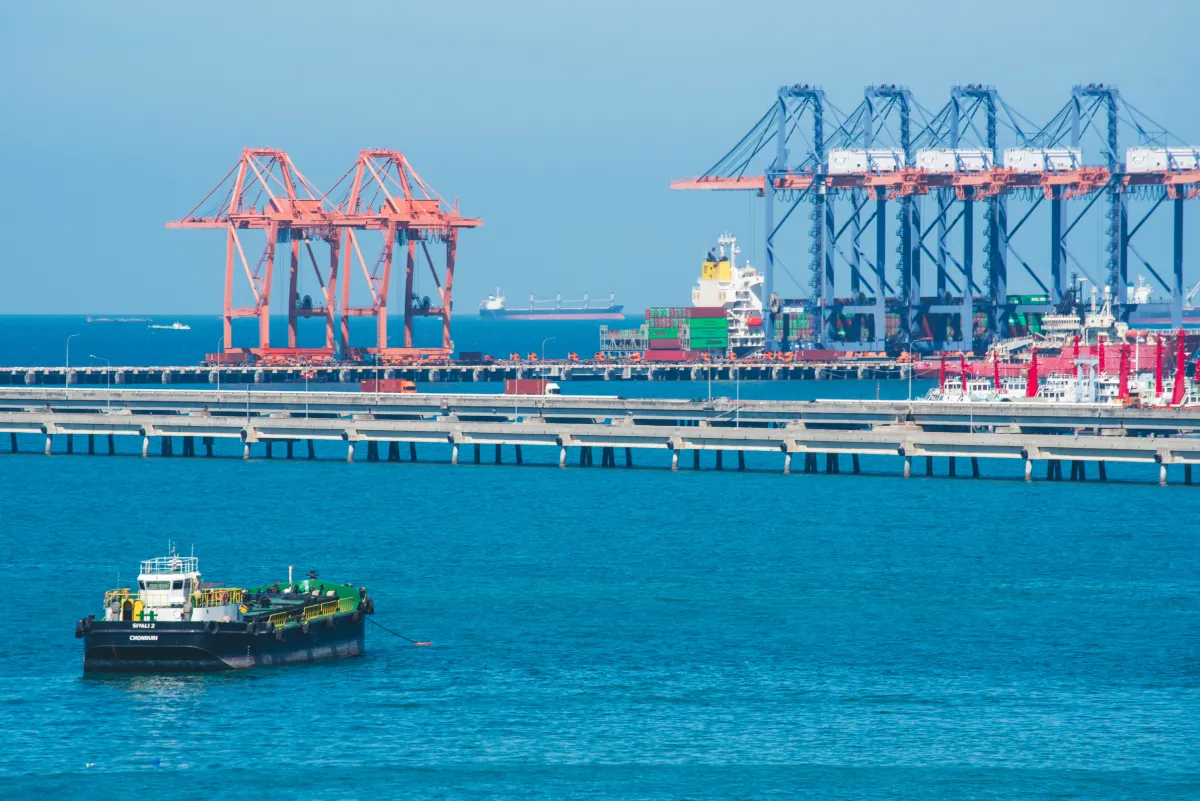In modern industry, dredging is not just a maintenance process; it is a critical operational process that underpins productivity, regulatory compliance, and environmental performance. From removing sludge in wastewater lagoons to managing tailings in mining facilities, industrial dredging services depend on high-performance pumps, hoppers, and hydraulic systems to efficiently move, contain, and control sediment. These integrated technologies are essential for restoring capacity, maintaining water quality, and handling contaminated materials, ensuring that industrial infrastructure operates reliably and without interruption.
The Backbone of Any Dredging Operation: Slurry and Dredge Pumps
In the world of industrial dredging services, the pump is more than just a core component — it is the heart that drives the entire operation. Whether it’s removing heavy sediment from a wastewater lagoon, reclaiming valuable tailings from a mining site, or clearing sludge from industrial ponds, pumps determine how efficiently, safely, and cost-effectively a project can be completed. Their ability to handle high-solids content, operate under extreme conditions, and sustain continuous production directly impacts throughput, downtime, and overall project ROI.
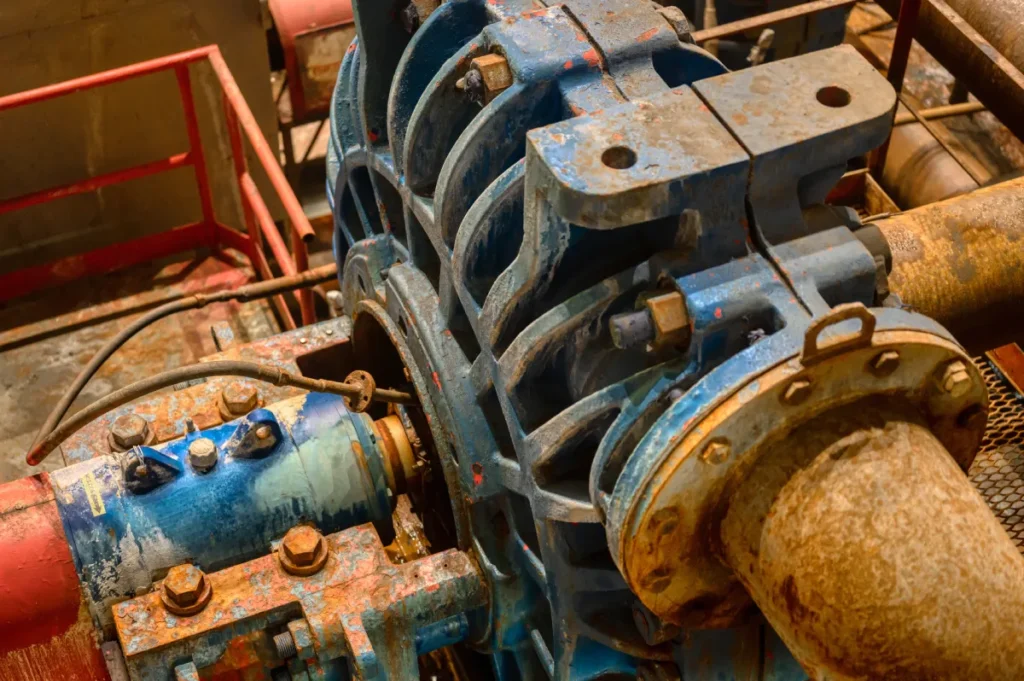
How Industrial Pumps Power Dredging Projects
At its core, dredging relies on pump mechanics that convert mechanical energy into hydraulic force, enabling the movement of sediment-laden fluids through pipelines. The process starts with suction, where the pump draws in a slurry mixture of water and solids from the dredging site. This mixture is then pressurized and discharged over distances that can range from a few meters to several kilometers, depending on the project’s scope.
A crucial performance metric in this process is solids handling capability — the percentage of abrasive, dense, or viscous material the pump can transport without clogging or wear. Advanced pump designs used in industrial pond and lagoon dredging services are engineered to maintain a consistent flow, even with high-viscosity sludge, thereby minimizing the risk of blockages and ensuring stable production.
Different dredging scenarios require different pump types, each with distinct strengths:
- Horizontal Slurry Pumps: These heavy-duty, ground-mounted pumps are ideal for continuous high-flow applications. Their robust design allows them to handle large volumes of abrasive material and operate efficiently over long discharge distances.
- Submersible Dredge Pumps: Deployed directly at the dredge head or underwater, these pumps are suited for confined or deepwater environments where suction lift is a limiting factor. Their proximity to the slurry source reduces head loss and maximizes suction efficiency.
- Self-Priming Pumps: Known for their rapid deployment and ease of operation, self-priming systems are preferred for projects that require frequent starts and stops. They offer flexibility in industrial applications where mobility and quick setup are critical.
Pump Selection Factors for Industrial Applications
Selecting the right pump is a strategic decision that depends on a range of operational and environmental variables. Understanding these factors is essential for optimizing performance and minimizing lifecycle costs:
- Viscosity, Solids Percentage, and Material Type: Dense, cohesive materials like clay, silt, or biosolids demand higher suction power and wear-resistant internals, while lighter sediments allow for lower-power configurations.
- Pipeline Length and Head Requirements: Longer discharge pipelines require higher head capabilities to maintain flow velocity and prevent settling. Engineers must calculate total dynamic head (TDH) based on elevation changes, friction losses, and distance.
- Maintenance and Wear Considerations: Abrasive slurries accelerate wear on impellers, liners, and casings. Selecting pumps with replaceable wear components, hardened materials, and accessible maintenance points helps extend operational uptime and reduce repair costs.
Pump Applications in Specialized Scenarios
Slurry and dredge pumps are highly adaptable, serving a broad range of industrial applications where precision and reliability are non-negotiable:
- Tailings Reclamation and Mineral Recovery: In mining operations, pumps transport dense mixtures of tailings and fine particles from processing facilities to containment areas or reprocessing units, enabling resource recovery and safe waste disposal.
- Industrial Lagoon Dredging for Sludge and Biosolids: Wastewater treatment plants and manufacturing facilities rely on specialized pumps to remove thick sludge and organic material from lagoons and ponds. High-solids handling capabilities are crucial for maintaining capacity and regulatory compliance.
- Hazardous Waste Containment and Removal: In environmental remediation projects, pumps are designed to handle corrosive or toxic materials, ensuring safe transport without leaks or equipment damage, thereby supporting compliance with strict industrial and environmental standards.
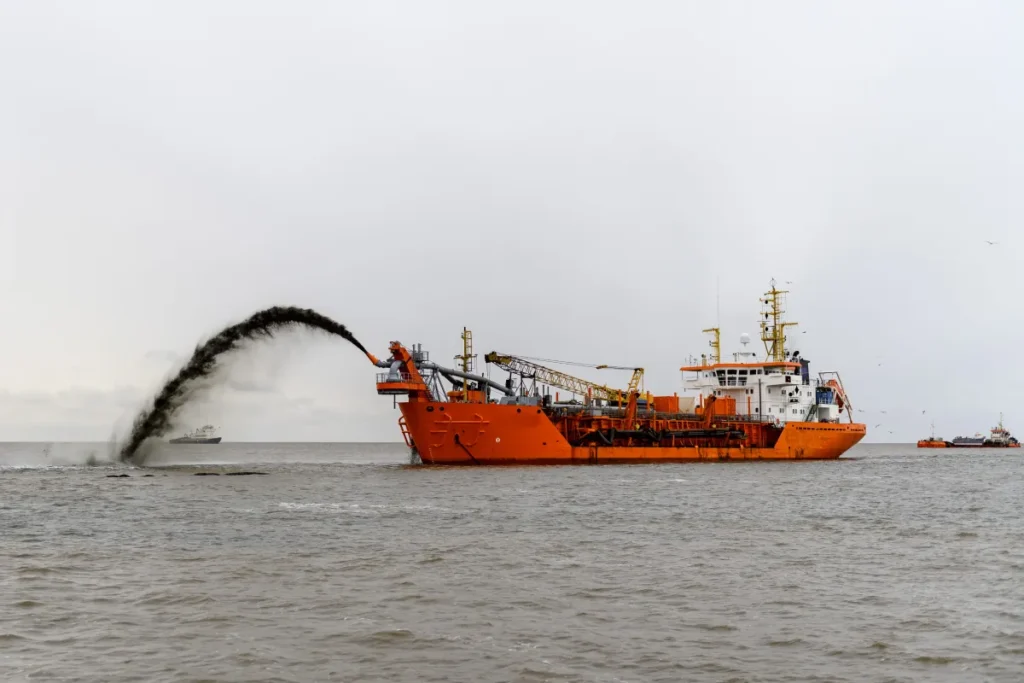
Hoppers: The Workhorses of Sediment Management
While pumps provide the driving force behind dredging operations, hoppers serve as the backbone of sediment handling, transport, and disposal — especially in large-scale or high-volume industrial dredging projects. These specialized vessels and containment systems are indispensable in industrial dredging services because they streamline the entire material management cycle, from excavation to placement, enabling operators to handle massive sediment loads with precision and efficiency.
Role of Hopper Dredgers in Large-Scale Projects
Hopper dredgers are purpose-built vessels equipped with large onboard storage tanks, known as hoppers, designed to collect, transport, and release dredged material without the need for continuous pumping. Once sediment is suctioned through drag arms or cutter systems, it’s stored inside the hopper until it reaches capacity. The dredged slurry gradually settles, allowing water to overflow back into the waterbody — a critical step in maximizing payload efficiency.
Modern hopper systems are engineered with several key design features that enhance performance and reliability in demanding environments:
- Hopper Capacity: Ranging from hundreds to tens of thousands of cubic meters, capacity directly influences production rates and transport efficiency. Large-capacity hoppers reduce the number of disposal trips, optimizing project timelines.
- Overflow Systems: Controlled overflow mechanisms enable the discharge of excess water during loading, thereby concentrating the sediment load and enhancing efficiency. Advanced systems are designed to reduce turbidity and comply with environmental regulations.
- Discharge Mechanisms: Hoppers can release material through bottom doors, pump-out systems, or rainbow discharge techniques. The choice depends on project requirements such as disposal site depth, distance, and environmental sensitivity.
These features make hopper dredgers indispensable for large-scale projects like navigation channel deepening, coastal nourishment, and offshore disposal, while maintaining high production rates and operational versatility.
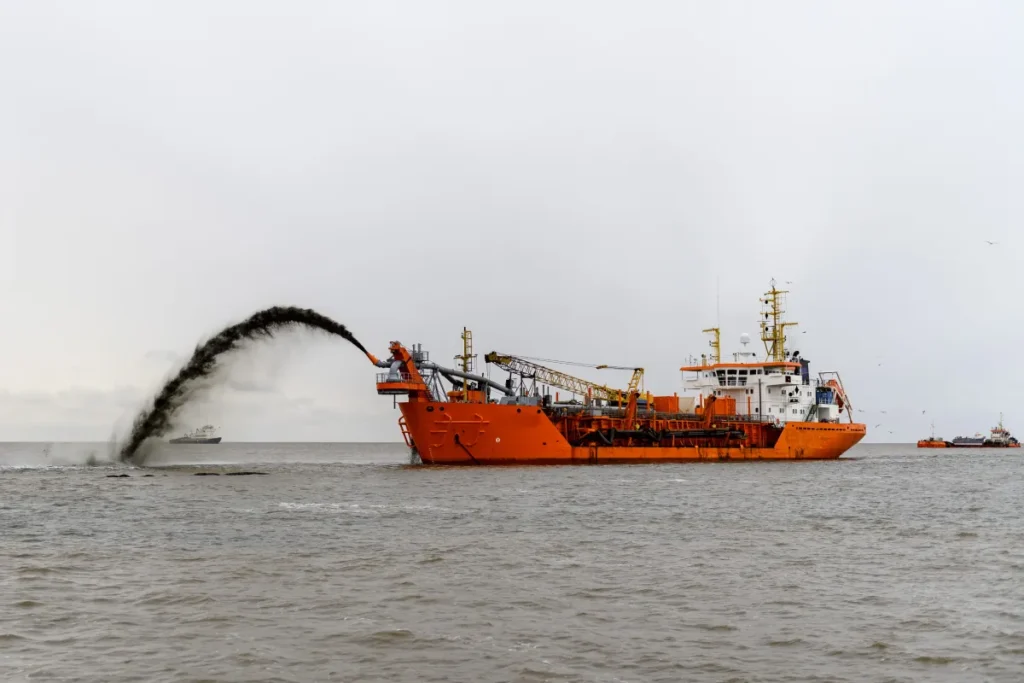
When to Use Hopper Systems vs. Pipeline Transport
Choosing between hopper-based sediment transport and continuous pipeline pumping depends on the project’s scale, logistics, and environmental conditions.
- Offshore Disposal: Hopper dredgers excel in offshore or deep-water projects where pipeline infrastructure is impractical or cost-prohibitive. Their ability to transport large volumes of sediment over long distances without continuous pumping makes them ideal for ocean disposal or offshore fill placement.
- Land Reclamation: For projects involving the creation or expansion of land, hoppers can deliver sediment directly to reclamation sites, providing controlled deposition and reducing shore-based handling.
- Confined Aquatic Disposal (CAD): When precise placement of dredged material is needed within confined underwater cells, hopper discharge systems offer superior accuracy compared to pipeline methods.
Relevance to Industrial and Lagoon Environments
While traditionally associated with coastal and navigation dredging, hopper technology is also gaining ground in industrial pond and lagoon dredging services, where material containment, controlled transport, and safe disposal are critical. In these environments, hopper barges and modular containment units help manage sludge, biosolids, or contaminated sediment without disturbing surrounding operations.
Best practices for integrating hopper systems in industrial applications include:
- Minimizing Turbidity: Advanced overflow controls, slow discharge techniques, and staged loading help limit the release of fine particles into the water column, reducing ecological impacts.
- Safe Handling of Contaminated Sediments: When dealing with hazardous or polluted materials, sealed hoppers and controlled discharge systems prevent leaks and ensure the safe transport of materials to treatment or disposal facilities.
- Optimizing Capacity Utilization: Efficient loading and dewatering strategies improve payload density, reducing the number of trips and lowering operational costs.
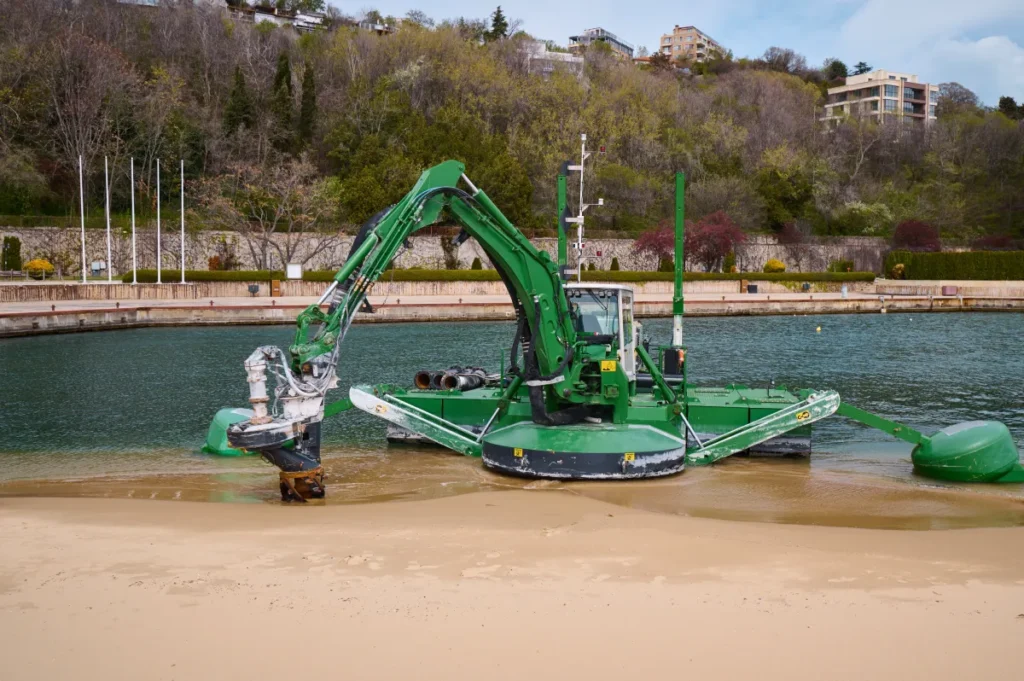
Hydraulic Systems: The Force Behind Precision and Power
In any industrial dredging service, hydraulics provide the controlled power that enables modern dredging equipment to be both precise and effective. Rather than relying solely on mechanical force, hydraulic systems use pressurized fluid to move and operate essential components — from cutter heads and winches to spud systems and swing arms — with exceptional torque and responsiveness. This control is vital when working in varied sediment conditions, allowing operators to adapt quickly, whether they’re cutting through compacted clay or repositioning equipment in a shifting lagoon environment.
Why Hydraulics Are Critical in Dredging Equipment
Hydraulics underpin nearly every motion-driven element of a dredge. Cutter heads rely on hydraulic torque to break apart dense material, while winches and swing arms depend on smooth hydraulic movement to maintain precise positioning. Spud systems utilize hydraulic cylinders for stable anchoring, which is essential for both safety and efficiency. Together, these functions ensure reliable performance across a wide range of industrial pond and lagoon dredging services, where conditions can change rapidly within a single project.
System Design Considerations
Effective hydraulic performance starts with smart system design. Pressure and flow rates must match the dredge size and application: high-pressure circuits are suitable for cutting compact material, while higher flow rates are required for fast positioning. Selecting the right power unit — diesel for remote work, electric for cleaner operations — also impacts efficiency. Many modern dredges integrate sensors and automation with hydraulic controls, providing real-time data to fine-tune performance and reduce operator workload.
Optimizing Hydraulic Performance for Industrial Projects
To sustain continuous operations, hydraulic systems must be both efficient and well-maintained. Load-sensing circuits, variable-displacement pumps, and proper cooling help minimize energy loss, while regular fluid checks, filter changes, and seal inspections extend system life and reduce downtime. When properly designed and maintained, hydraulics become a reliable force multiplier, powering precise and adaptable dredging performance across various industrial applications.
Equipment Integration: Building a Cohesive Dredging System
The efficiency of any industrial dredging service depends on how well pumps, hoppers, and hydraulics work together as one system. Each component has a specific role — pumps move the slurry, hoppers store and transport it, and hydraulics control positioning and operation — but only when synchronized do they deliver smooth, uninterrupted production.
Unified Operation and Flow Coordination
For maximum efficiency, flow rates, capacity, and discharge timing must align. Pumps should supply slurry at a rate the hopper can handle, while discharge systems must release material quickly enough to keep the pipeline clear. At the same time, hydraulics must coordinate cutter movement, spud positioning, and swing speed to match the pumping cycle. Even minor mismatches can cause blockages, overflow, or unnecessary wear and tear.
Modular vs. Purpose-Built Design
System design depends on project needs. Modular setups provide flexibility for tasks such as industrial lagoon dredging, where conditions vary. Purpose-built systems are designed for high-volume, continuous operations, where every component is optimized for maximum performance. In both cases, seamless integration ensures higher productivity, reduced downtime, and more consistent dredging results.
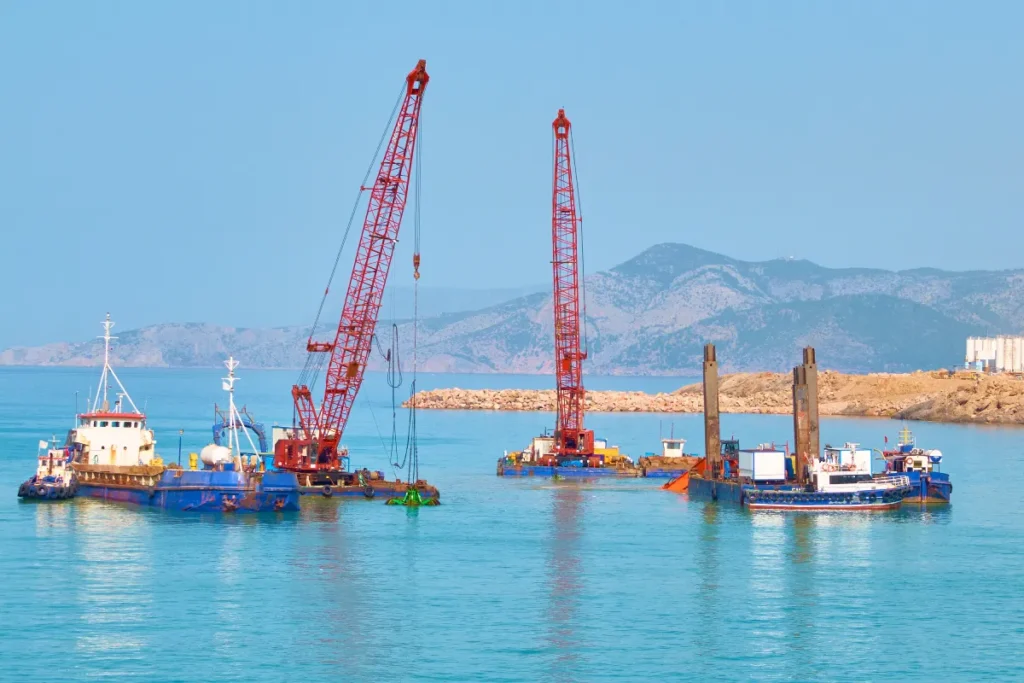
Industry Applications: Where These Systems Deliver Maximum Impact
The versatility of modern dredging systems allows them to address a wide range of challenges across heavy industry, wastewater management, and resource processing. By combining powerful pumps, efficient hoppers, and precise hydraulic control, industrial dredging services deliver measurable results in some of the most demanding environments.
Industrial Lagoon Dredging
In wastewater treatment plants, food processing facilities, and industrial sites, lagoons often accumulate thick sludge, reducing capacity and efficiency. Specialized dredging systems remove these sediments without draining the lagoon, restoring storage volume and ensuring environmental compliance. Precise hydraulic positioning and high-solids handling make this process safer and more cost-effective.
Pond Dredging
Manufacturing plants, power stations, and municipal facilities rely on pond systems for cooling, sediment collection, or effluent treatment. Over time, these ponds fill with silt and debris, which decreases their functionality and poses environmental risks. Targeted industrial pond dredging removes accumulated material, improves water flow, and extends the operational life of these assets — all with minimal disruption to ongoing operations.
Heavy-Industry Applications
In mining, dredging systems recover or relocate tailings, enabling resource reclamation and safer storage of these materials. Refineries and chemical plants use dredging to maintain containment basins, prevent overflow, and manage hazardous materials. Across these demanding applications, integrated dredging technology ensures continuous production, safer operations, and compliance with strict regulatory standards.
Final Thoughts: Investing in the Right Equipment for Long-Term Efficiency
Modern dredging solutions are transforming how industries handle sediment, waste, and water management challenges — offering greater efficiency, reduced downtime, and long-term operational reliability. By leveraging advanced equipment and tailored system design, facilities can maintain capacity, meet regulatory standards, and extend the lifespan of critical assets. If you’re looking for expert support in planning or executing a dredging project, we at Gulf Coast Dredging are here to help. Our team specializes in delivering customized dredging solutions for lagoons, ponds, basins, and heavy-industry sites, ensuring your operations remain productive, compliant, and future-ready.


